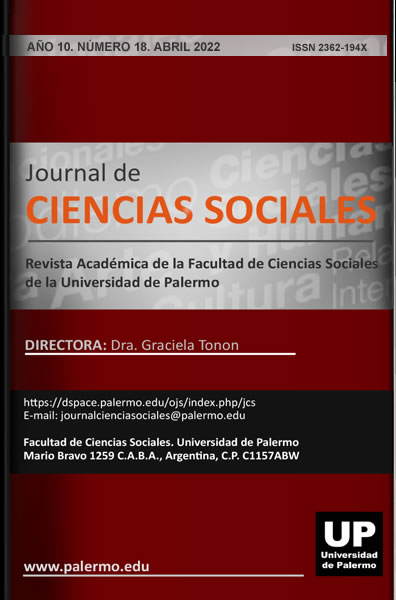What is the association between women’s political participation and public budged allocation to education and health?
A subnational-level analysis based on the Peruvian case
Abstract
This research analyses the association between women’s political participation at the subnational level and public budget allocation to policies of education and health in Peru, a middle-income Andean country. This study uses a large panel dataset with information from more than 1600 Peruvian municipalities between 2008 and 2014. Results based on dynamic econometric model estimations using the method of Arellano and Bond (2011) show a positive and statistically significant association between higher women’s political participation and higher proportions of public expenditure on policies of education and health, as well as on policies of ‘human development’ that combine these two abovementioned kinds of policies. Results also show that this association tends to be higher in districts with lower levels of economic development. This research contributes to the relatively scarce Latin-American literature on the relationship between women’s political participation at the subnational level and budget allocation to policies related to basic dimensions of human development such as education and health. This is particularly relevant inasmuch Latin America is a region in which the average proportion of female local authorities is not higher than 15%.
Downloads
References
Arellano, M. y Bond, S. (1991). Some tests of specification for panel data: Monte Carlo evidence and an application to employment equations. The review of economic studies, 58(2), 277-297.
Bhalotra, S. y Clots-Figueras, I. (2014). Health and the political agency of women. American Economic Journal: Economic Policy, 6(2), 164-197.
Brollo, F. y Troiano, U. (2016 ). What happens when a woman wins an election? Evidence from close races in Brazil. Journal Development Economics, 122, 28-45.
Chaney, E. M. (1979). Supermadre: Women in politics in Latin America. Austin: University of Texas Press.
Chattopadhyay, R., y Duflo, E. (2004). Women as policy makers: Evidence from a randomized policy experiment in India. Econometrica, 72(5), 1409-1443.
Chen, L. J. (2021). Female policymakers and educational expenditures: cross-country evidence. European Journal of Law and Economics, 51(1), 129-155.
Clayton, A. y Zetterberg, P. (2018). Quota shocks: Electoral gender quotas and government spending priorities worldwide. The Journal of Politics, 80(3), 916-932.
Clots-Figueras, I. (2011). Women in politics: Evidence from the Indian States. Journal of public Economics, 95(7-8), 664-690.
Clots-Figueras, I. (2012). Are female leaders good for education? Evidence from India. American Economic Journal: Applied Economics, 212-244.
Ferreira, F. y Gyourko, J. (2014). Does gender matter for political leadership? The case of US mayors. Journal of Public Economics, 112, 24-39.
Funk, K. D. y Philips, A. Q. (2019). Representative budgeting: Women mayors and the composition of spending in local governments. Political Research Quarterly, 72(1), 19-33.
Gottlieb, J. Grossman, G. y Robinson, A. L. (2016). Do men and women have different policy preferences in Africa? Determinants and implications of gender gaps in policy prioritization. British Journal of Political Science, 48(3), 611-636. doi:10.1017/S0007123416000053
Greene, W. (2012). Econometric Analysis. Pearson .
Homan, P. (2017). Political gender inequality and infant mortality in the United States, 1990–2012. Social Science y Medicine, 182, 127-135.
Kumar, S. y Prakash, N. (2017). Effect of political decentralization and female leadership on institutional births and child mortality in rural Bihar, India. Social Science y Medicine, 185, 171-178.
Macmillan, R., Shofia, N. y Sigle, W. (2018). Gender and the politics of death: female representation, political and developmental context, and population health in a cross-national panel. Demography, 55(5), 1905-1934.
Pathak, Y. y Macours, K. (2017). Women’s political reservation, early childhood development, and learning in India. Economic Development and Cultural Change, 65(4), 741-766, 741-766.
Priyanka, S. (2020). Effect of Female Political Representation on Education and Employment.
Rigon, M. y Tanzi, G. (2012). Does gender matter for public spending? Empirical evidence from Italian municipalities. Empirical Evidence from Italian Municipalities (27 de abril). Bank of Italy Temi di Discussione (Working Paper) No, 862.
Schwindt-Bayer, L. (2007). Female Legislators and the Promotion of Women, Children, and Family Policies in Latin America.
Sen, A. (1999). Development as freedom. Anchor Books.
Sime, P. (2016). Entrevista a Patricia Sime. (A. Montoya, Entrevistador)
Svaleryd, H. (2009). Women's representation and public spending. European Journal of Political Economy, 25(2), 186-198.
Yao, Y. y You, W. (2018). Women’s political participation and gender gaps of education in China: 1950–1990. World Development, 106, 220-237.
Otras fuentes consultadas
Comisión Económica para América Latina y el Caribe (CEPAL). (2019). CEPALSTAT. Obtenido de Proporción de escaños ocupados por mujeres en los gobiernos locales. https://cepalstat-prod.cepal.org/cepalstat/tabulador/ConsultaIntegrada.asp?idIndicador=4077yidioma=e
Congreso de la República del Perú. (9 de julio de 2001). Ley Nº 27.506. Ley del Canon. Lima
Congreso de la República del Perú. (6 de mayo de 2003). Ley Nº 27.972. Ley orgánica de municipalidades. Lima.
Instituto Nacional de Estadística e Informática. (25 de junio de 2018). Instituto Nacional de Estadística e Informática. Obtenido de Población 2000 al 2015. https://proyectos.inei.gob.pe/web/poblacion/
Instituto Nacional de Estadística e Informática. (s.f.). Instituto Nacional de Estadística e Informática. Obtenido de Microdatos. Base de datos. http://iinei.inei.gob.pe/microdatos/
Jurado Nacional de Elecciones. (2017). Infogob. Obtenido de Base de datos en línea. http://www.infogob.com.pe/basedatos
Ministerio de Economía y Finanzas. (2010). Ministerio de Economía y FInanzas. Obtenido de Decreto Supremo Nº 002-2010-EF. https://www.mef.gob.pe/contenidos/presu_publ/migl/normas/DS002_2010EF.pdf
Ministerio de Economía y Finanzas. (2015). Ministerio de Economía y Finanzas. Obtenido de Decreto Supremo Nº400-2015-EF. https://cdn.www.gob.pe/uploads/document/file/255152/229257_file20181218-16260-dk94s6.pdf
Ministerio de Economía y Finanzas. (2018). Ministerio de Economía y Finanzas. Obtenido de Transparencia Económica. Consulta Amigable. http://apps5.mineco.gob.pe/transparencia/Navegador/default.aspx?y=2018yap=ActProy
Naciones Unidas. (15 de Enero de 2021). ONU Mujeres. Obtenido de Hechos y cifras: Liderazgo y participación política de las mujeres: https://www.unwomen.org/es/what-we-do/leadership-and-political-participation/facts-and-figures
Organisation for Economic Co-operation and Development (OECD) (2019). OECD Data. Obtenido de Women in politics. https://data.oecd.org/inequality/women-in-politics.htm
Programa de las Naciones Unidas para el Desarrollo (2016). Informe sobre desarrollo humano 2016. Desarrollo humano para todas las personas.
The authors retain the rights to their work guaranteeing this journal the right of first publication, committing to cite the Journal of Social Sciences as a reference of the original publication.
The works published in the Journal are published under the terms indicated in the Creative Commons License with the International Attribution 4.0 (CC BY 4.0).




























